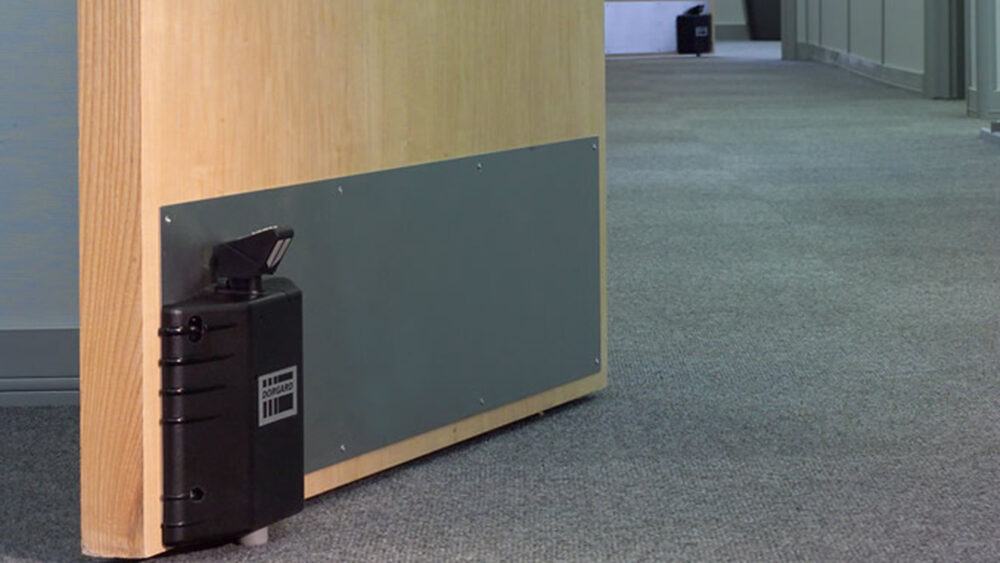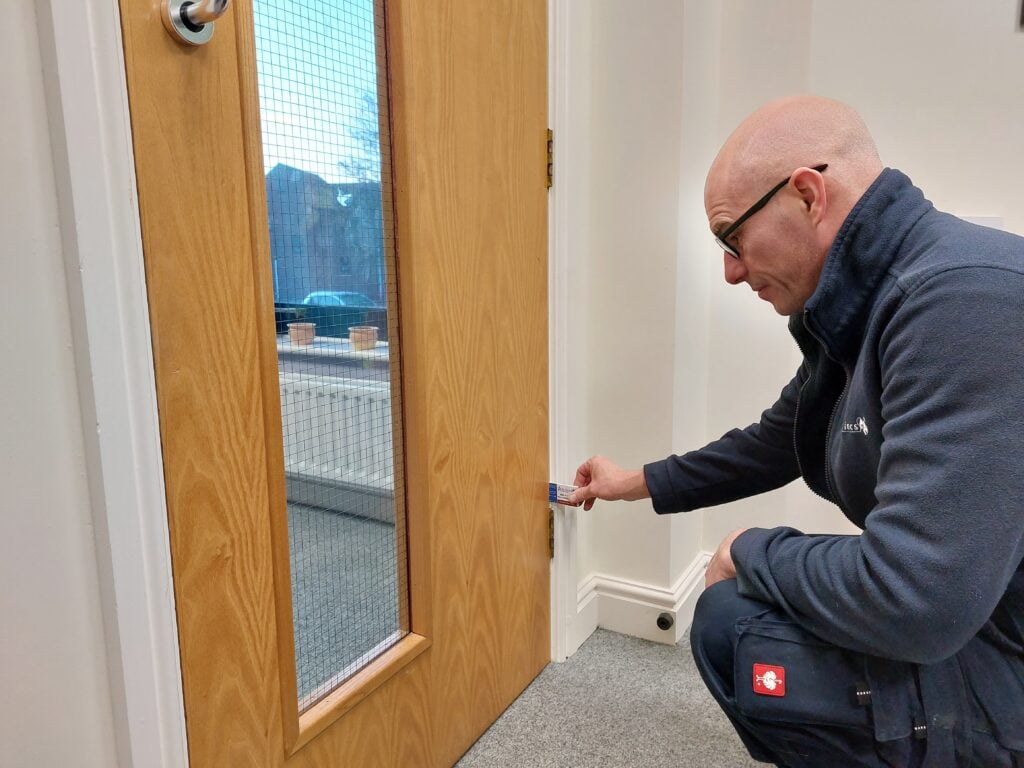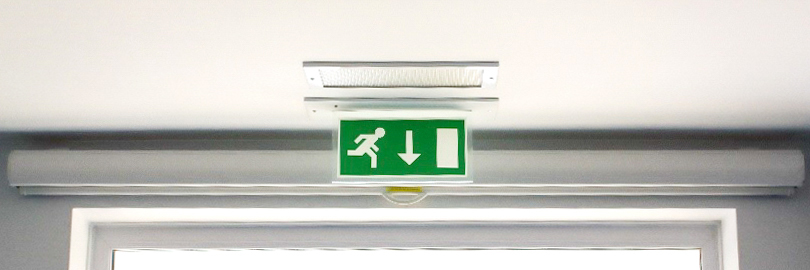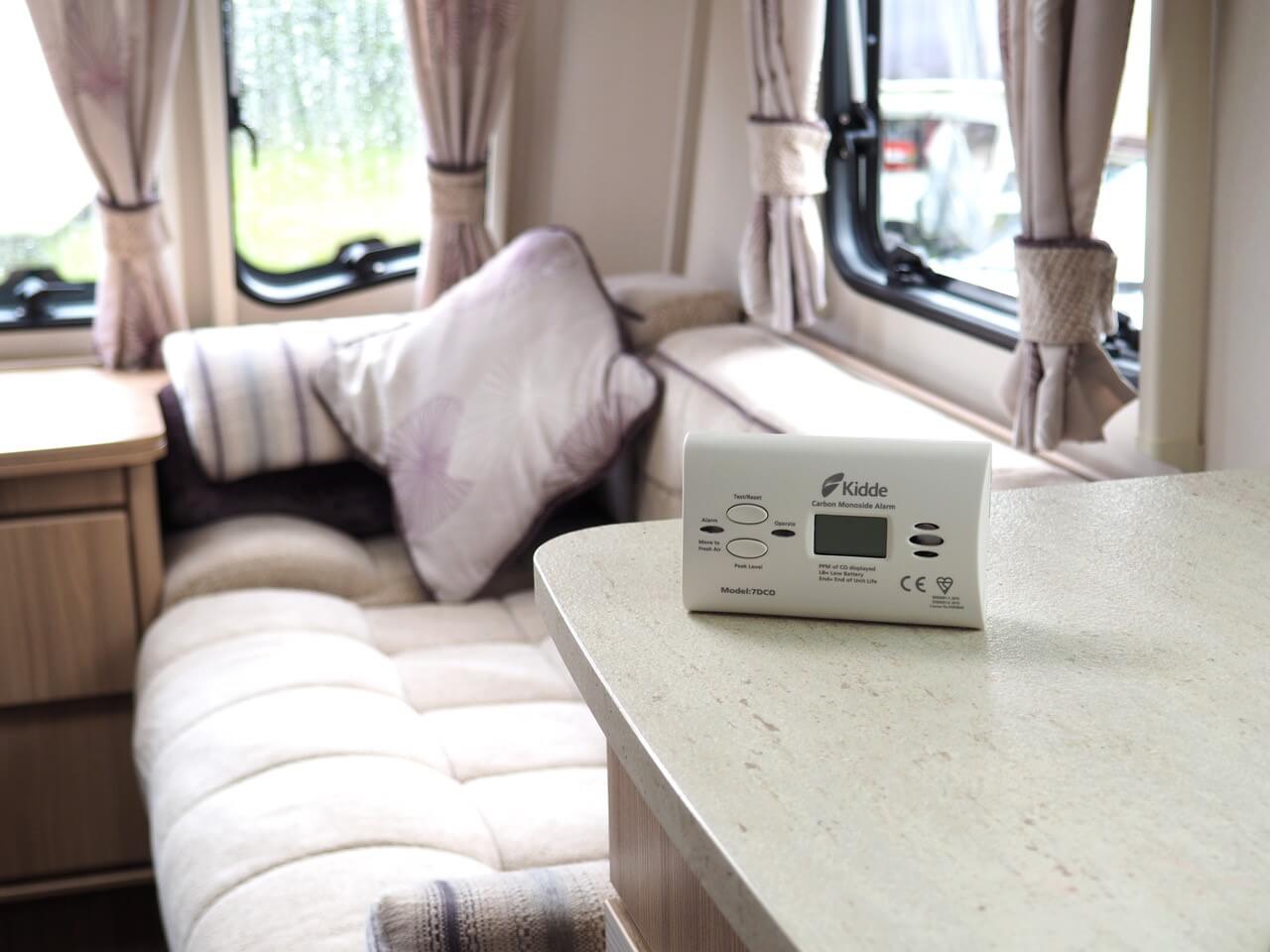Sunday 21st September 2025

When protecting commercial buildings from fire hazards, the FD60 fire door represents one of the most critical safety investments an organisation can make. These robust barriers provide double the protection of standard fire doors, offering 60 minutes of fire and smoke resistance that can make the difference between minor property damage and catastrophic loss. Understanding the proper specification, installation and maintenance of an FD60 system is essential for facility managers, building owners and safety professionals responsible for protecting lives and assets.
Understanding FD60 Fire Door Specifications
The designation ‘FD60’ indicates a fire door tested and certified to resist fire and smoke penetration for a minimum of 60 minutes under controlled laboratory conditions. This enhanced protection level makes the FD60 particularly valuable in commercial settings where evacuation may be complex or high-value assets require additional safeguarding. When fire doors are explained in technical terms, an FD60 achieves superior performance through increased door thickness (typically 54mm minimum compared to 44mm for FD30), higher-density core materials, and enhanced intumescent seal systems.
The construction of an FD60 fire door involves sophisticated engineering beyond simply adding thickness. These doors incorporate multiple layers of fire-resistant materials, often including mineral cores or specially treated timber composites designed to maintain structural integrity at extreme temperatures. The 30 and 60 minute fire door frames must be equally robust, manufactured to exacting standards to ensure the entire assembly performs as a cohesive unit during a fire event.
Commercial buildings often require FD60s designation, where the ‘s’ indicates smoke protection capability. These doors feature dual protection systems: intumescent strips that expand at approximately 200°C to seal against flames, and cold smoke seals that prevent toxic smoke passage even before the fire reaches the door. This combination is particularly crucial in commercial environments where smoke inhalation poses the primary threat to building occupants during evacuation.
Critical Applications for FD60 in Commercial Settings
The FD60 fire door installation guide must begin with understanding where these enhanced protection levels are legally required or strongly recommended. Building regulations typically mandate 60-minute protection for compartment walls separating different buildings or distinct fire risk areas. In commercial settings, this includes walls between different tenancies in multi-occupied buildings, boundaries between manufacturing and office areas, and separations between high-risk zones such as plant rooms and occupied spaces.
Server rooms and data centres represent prime candidates for FD60 protection, where the combination of electrical equipment, cooling systems and critical business data creates both elevated fire risk and substantial potential losses. Similarly, chemical storage areas, boiler rooms and electrical distribution centres benefit from the extended containment period that FD60 doors provide, allowing more time for specialist fire suppression systems to activate and emergency responders to arrive.
Healthcare facilities particularly benefit from FD60 specifications, as evacuation strategies often involve horizontal movement to adjacent compartments rather than complete building evacuation. The additional 30 minutes of protection compared to FD30 doors can be crucial when moving patients with limited mobility or those connected to life-support equipment. Care homes, hospitals and assisted living facilities frequently specify FD60 doors throughout to provide maximum protection for vulnerable occupants.
Installation Best Practices for FD60 Fire Doors
Proper installation of an FD60 fire door demands meticulous attention to detail and strict adherence to manufacturer specifications. The increased weight and thickness of these doors – often exceeding 75kg – requires robust fixing methods and careful handling procedures. The FD60 fire door installation guide emphasises that even minor installation errors can compromise the door’s fire resistance, potentially reducing a 60-minute barrier to mere minutes of protection.
Frame preparation represents the foundation of successful FD60 installation. The supporting wall structure must be capable of bearing the door’s weight while maintaining integrity during a fire. Any voids between the frame and structural opening require filling with appropriate fire-resistant materials – never standard building foam or conventional fillers. The frame itself must be plumb, square and securely fixed at maximum 600mm centres, with additional fixings required for the considerable forces generated when intumescent seals activate.
Gap tolerances for FD60 doors follow the same strict standards as other fire doors: 2-4mm at sides and top, with threshold gaps typically not exceeding 10mm (though manufacturer specifications may vary). Achieving these precise measurements becomes more challenging with heavier FD60 doors, as their weight can cause frame distortion or hinge compression over time. Using appropriate packers and adjustment mechanisms during installation helps maintain correct gaps throughout the door’s service life.
Hardware selection for FD60 doors requires particular consideration. Standard hinges designed for FD30 doors may not adequately support the additional weight, leading to sagging and gap irregularities. Fire door inspection and installation services can ensure all components meet the necessary specifications, including CE marked hinges rated for the door weight, appropriately powered closers (minimum EN4 for most FD60 doors) and fire-rated locks and latches compatible with the door’s certification.

Maintenance Requirements for 60-Minute Fire Doors
The substantial investment in FD60 protection demands correspondingly rigorous maintenance to ensure continued performance. The Regulatory Reform (Fire Safety) Order 2005 requires fire doors to be maintained in efficient working order, with regular inspections forming a crucial component of compliance. For FD60 doors in commercial buildings, the enhanced protection level makes proper maintenance even more critical, as these doors often protect the most vulnerable areas or valuable assets.
Regular inspection schedules should account for the heavier construction and more complex seal systems of FD60 doors. While standard practice recommends six-monthly inspections for most fire doors, high-traffic FD60 installations may benefit from quarterly checks. The increased door weight places greater stress on hinges and frames, potentially accelerating wear compared to lighter FD30 alternatives. Inspection protocols should specifically address hinge condition, checking for signs of metal fatigue, loose fixings or bearing wear that could compromise door alignment.
The intumescent strips and smoke seals on FD60 doors require particular attention during maintenance checks. The extended fire resistance depends on these seals maintaining their integrity and correct positioning. Any paint application to the door must avoid covering the seals, as this can prevent proper expansion during a fire. Damage from impact, cleaning chemicals or general wear must be addressed immediately, with replacement seals matching the original specification to maintain the door’s certification.
Door closer maintenance becomes particularly important with FD60 installations due to the forces involved in controlling heavier doors. Closers must overcome not only the door weight but also the resistance from comprehensive seal systems. Regular adjustment ensures appropriate closing speeds – fast enough to ensure prompt closure but controlled to prevent slamming that could damage the door, frame or seals.
Common Challenges with FD60 Implementation
The weight of FD60 fire doors presents significant accessibility challenges in commercial buildings. Doors exceeding 75kg require considerable force to open, potentially excluding users with limited strength or mobility impairments. The Equality Act 2010 requires reasonable adjustments to ensure disabled access, creating potential conflict between fire safety requirements and accessibility obligations. Solutions include electromagnetic hold-open devices that release automatically when fire alarms activate, or free-swing door closers that temporarily disengage resistance during normal use.
Cost considerations often influence FD60 specification decisions. The doors themselves typically cost 40-60% more than equivalent FD30 options, with additional expenses for upgraded frames, heavy-duty hardware and specialised installation. However, comparing FD30 and FD60 fire door benefits reveals that the enhanced protection can justify the investment, particularly when considering potential business interruption costs, insurance premium reductions and the invaluable protection of human life.
Retrofitting FD60 doors into existing buildings presents unique challenges. Structural openings designed for standard doors may require significant modification to accommodate the thicker FD60 profile. Wall construction must be verified capable of supporting the additional weight, potentially requiring reinforcement. In heritage buildings or those with architectural constraints, achieving FD60 protection while maintaining aesthetic requirements demands creative solutions and potentially bespoke manufacturing.
Regulatory Compliance and Documentation
Demonstrating compliance for FD60 installations requires comprehensive documentation throughout the door’s lifecycle. BWF-Certifire certification provides third-party verification that doors meet required standards, with unique serial numbers enabling traceability to test evidence and manufacturing specifications. Building owners must maintain records showing not only initial certification but also evidence of proper installation, regular maintenance and any modifications or repairs undertaken.
Fire risk assessments must clearly identify where FD60 protection is required and verify that installed doors meet these specifications. The assessment should consider factors including building layout, occupancy characteristics, evacuation strategies and the presence of hazardous materials or high-value assets. Where FD60 doors are specified beyond minimum regulatory requirements, the risk assessment should document the rationale for enhanced protection levels.
Building regulations continue evolving to address emerging fire safety challenges. The Fire Safety Act 2021 expanded the scope of fire risk assessments to include flat entrance doors and building structure, potentially affecting FD60 requirements in mixed-use commercial buildings. Staying current with regulatory changes ensures continued compliance and may identify opportunities to enhance protection beyond minimum standards.

Integration with Building Fire Strategies
FD60 fire doors form integral components of comprehensive fire strategies, working in conjunction with detection systems, suppression equipment and evacuation procedures. The 60-minute protection period must align with expected evacuation times, fire service response capabilities, and the activation time of suppression systems. In complex commercial buildings, fire risk assessors may specify FD60 doors strategically to create protected routes or temporary refuge areas.
The relationship between FD60 doors and smoke control systems requires careful coordination. While the doors provide excellent smoke containment when closed, they must not impede designed smoke ventilation paths. In buildings with mechanical smoke extraction, door positions and opening forces must be calculated to ensure systems function correctly. Automatic opening devices may be required to facilitate smoke clearance after evacuation completion.
Modern building management systems increasingly integrate fire door monitoring capabilities. Sensors can detect when FD60 doors are wedged open, alert maintenance teams to doors failing to close properly, or track usage patterns that might indicate accelerated wear. These smart building technologies help ensure FD60 doors remain ready to perform when needed, while providing audit trails for compliance demonstration.
Future Developments in FD60 Technology
The fire door industry continues advancing FD60 technology to address current limitations while improving performance. Research into lighter-weight core materials promises to reduce door mass without compromising fire resistance, potentially resolving accessibility challenges. Advanced composite materials and aerogel-based insulation systems show particular promise for next-generation FD60 doors that match current protection levels at substantially reduced weights.
Sustainability considerations increasingly influence FD60 specifications. Manufacturers are developing doors using renewable materials, reduced-emission manufacturing processes, and designs optimised for end-of-life recycling. Life-cycle assessments help building owners balance environmental impact against safety requirements, with some FD60 doors now achieving impressive sustainability credentials without compromising fire performance.
Smart door technology continues evolving, with FD60 doors incorporating sophisticated monitoring and diagnostic capabilities. Future systems may predict maintenance requirements using artificial intelligence, automatically adjust closer forces based on environmental conditions, or provide real-time fire spread modelling to emergency responders. These technological advances promise to enhance both the reliability and effectiveness of FD60 fire protection.
The FD60 fire door represents a critical investment in commercial building safety, providing enhanced protection that can save lives, preserve property and ensure business continuity. Understanding the complexities of specification, installation and maintenance ensures these sophisticated safety systems perform as intended when needed most. From initial risk assessment through ongoing maintenance, every aspect of FD60 implementation demands professional attention to detail and commitment to best practices.
Success with FD60 systems requires collaboration between building owners, fire safety professionals, installers and maintenance teams. Regular training ensures all stakeholders understand their roles in maintaining these vital safety barriers. When properly specified, installed and maintained following this FD60 fire door installation guide, these robust doors provide peace of mind that commercial buildings offer the highest levels of fire protection for occupants and assets.
As fire safety regulations continue evolving and building uses change over time, the enhanced protection offered by FD60 doors provides valuable flexibility and future-proofing. While the initial investment may seem substantial, the long-term benefits of superior fire protection, regulatory compliance, and enhanced life safety make FD60 fire doors an essential component of responsible commercial building management. Whether protecting data centres, healthcare facilities, or multi-tenancy buildings, FD60 doors stand ready to provide crucial minutes when every second counts.
All information correct at time of posting.



